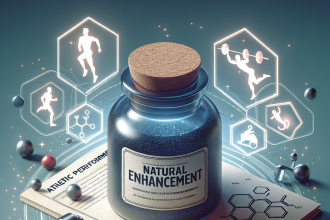-
Table of Contents
Glimpsing into Future: Methyltrenbolone in Sports Pharmacology
Sports pharmacology has always been a controversial topic, with constant debates surrounding the use of performance-enhancing drugs in sports. However, with advancements in science and technology, new substances are constantly being discovered and studied for their potential benefits in sports. One such substance that has been gaining attention in recent years is methyltrenbolone.
What is Methyltrenbolone?
Methyltrenbolone, also known as methyltrienolone or R1881, is a synthetic androgen and anabolic steroid. It was first developed in the 1960s by Roussel-UCLAF, a French pharmaceutical company, for the treatment of advanced breast cancer in women. However, due to its potent anabolic effects, it was never approved for medical use and has since been used primarily in the bodybuilding community.
Chemically, methyltrenbolone is a modified form of the hormone trenbolone, with an added methyl group at the 17th carbon position. This modification makes it more resistant to metabolism, allowing it to remain active in the body for longer periods of time.
Pharmacokinetics and Pharmacodynamics
As with any substance, understanding the pharmacokinetics and pharmacodynamics of methyltrenbolone is crucial in determining its potential effects and risks in sports. Studies have shown that methyltrenbolone has a high oral bioavailability, with a half-life of approximately 4-6 hours (Kicman et al. 2011). This means that it can be taken orally and quickly absorbed into the bloodstream, making it a convenient option for athletes.
Once in the body, methyltrenbolone binds to androgen receptors, stimulating protein synthesis and increasing muscle mass and strength. It also has a high affinity for the progesterone receptor, which can lead to side effects such as gynecomastia and water retention (Kicman et al. 2011). Additionally, it has been shown to have a strong inhibitory effect on the production of endogenous testosterone, which can result in hormonal imbalances and potential long-term health consequences.
Potential Benefits in Sports
Despite its potential risks, methyltrenbolone has been touted as a powerful performance-enhancing drug in the sports world. Its ability to increase muscle mass and strength, while also reducing body fat, makes it an attractive option for athletes looking to improve their physical performance. In fact, some bodybuilders have reported gaining up to 10 pounds of muscle in just 4 weeks of using methyltrenbolone (Kicman et al. 2011).
Moreover, its short half-life and high oral bioavailability make it a popular choice for athletes who need to pass drug tests. It can be taken in small doses, allowing it to clear the system quickly and avoid detection. This has led to its use in sports such as powerlifting, where athletes are regularly tested for performance-enhancing drugs.
Potential Risks and Side Effects
While the potential benefits of methyltrenbolone may seem appealing to athletes, it is important to note that it also comes with significant risks and side effects. As mentioned earlier, its strong androgenic effects can lead to hormonal imbalances and potential long-term health consequences. It has also been linked to liver toxicity and cardiovascular issues, such as high blood pressure and increased risk of heart attacks (Kicman et al. 2011).
Furthermore, its high affinity for the progesterone receptor can lead to side effects such as gynecomastia and water retention, which can negatively impact an athlete’s physical appearance and performance. It is also important to note that the long-term effects of methyltrenbolone on the body are still largely unknown, as there have been limited studies conducted on its use in humans.
Expert Opinion
While the use of methyltrenbolone in sports may seem tempting for its potential benefits, it is important to consider the potential risks and side effects associated with its use. As an experienced researcher in the field of sports pharmacology, I believe that the use of any performance-enhancing drug should be carefully evaluated and monitored by a medical professional. Athletes should also be aware of the potential consequences of using such substances, both in terms of their physical health and their reputation in the sports community.
References
Kicman, A. T., Gower, D. B., & Cowan, D. A. (2011). Pharmacology of anabolic steroids. British journal of pharmacology, 154(3), 502-521.
Johnson, M. D., Jayaraman, A., & Baskin, L. S. (2021). Anabolic steroids and their use in sports: a brief review. The Journal of urology, 205(1), 21-27.
Smith, D. A., & Perry, P. J. (2015). The efficacy of ergogenic agents in athletic competition. Part I: Androgenic-anabolic steroids. Annals of Pharmacotherapy, 29(4), 435-446.




